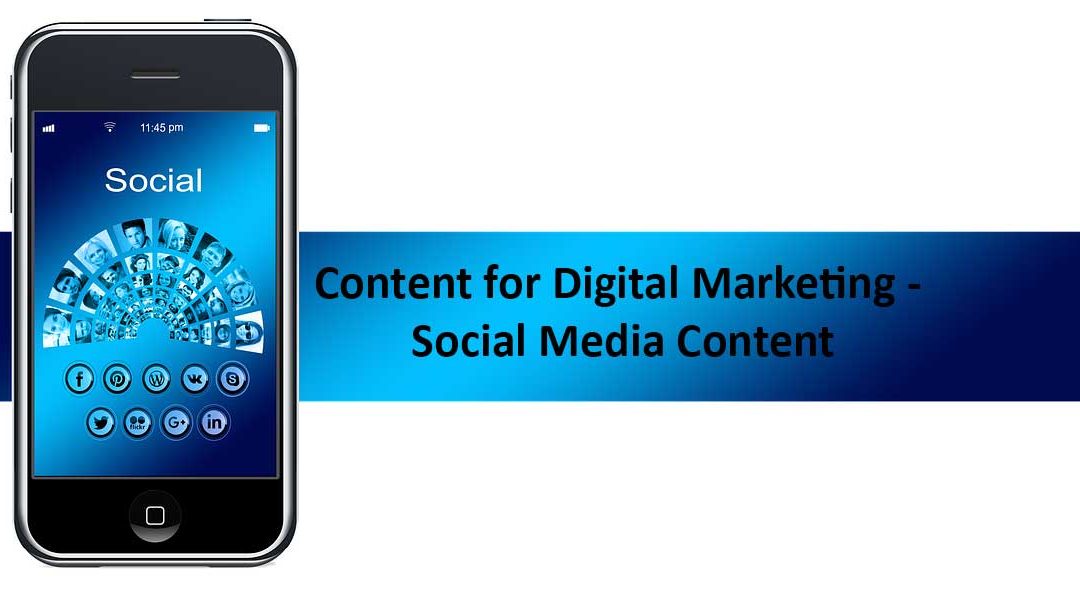Last Updated on February 2, 2023 by Anthony
This content contains 1742 words and is approximately a 7-minute read.
Social media has gradually taken over the internet in the years since the first social platforms began appearing in the late 1990s. From Six Degrees to MySpace to LinkedIn, enterprising organisations began seeing the potential behind social networks as the 1990s turned into the 2000s. Then along came Facebook in 2006, and everything changed.
Saying that social media dominates online conversations is like saying that football is the most popular sport in the world. Everybody knows it. The question for you as a content creator is this: what are you going to do about it? You are already aware that almost everyone you know uses social media to one extent or another, so how are you going to use it as a marketing tool?
Before you dismiss the potential of social media for marketing, consider the number of active users on each of the following social networks, as of January 2017:
- Facebook – 1.87 billion
- WhatsApp – 1 billion
- Instagram – 600 million
- Twitter – 317 million
- Pinterest – 150 million
- LinkedIn – 106 million.
There is simply no other medium in the world capable of reaching as wide an audience as social media reaches. What’s more, social media audiences reached on a daily basis.
For comparison purposes, consider this: the BBC website received just under 6.18 billion total visits during the six months ending in August 2017. That amounts to a little more than 1 billion per month. But not all those visits were from unique, first-time visitors. In fact, most of them were repeat visitors. Facebook’s 1.87 billion active users are almost all unique individuals using the site every single day.
Now do you understand why social media content creation is so important? Good. Let’s move on.
What is Social Media Content?
Social media content is marketing content created specifically for the purpose of engaging with a social audience. It is not a single form of content inasmuch as the various social networks all have their own ways of doing things. On Facebook you can create original posts consisting of short sentences or multiple paragraphs of text. You can post images, videos, and links to outside content.
LinkedIn is the business equivalent of Facebook while on Twitter, you are encouraged to post short sentences of about 140 characters (although at the time of this writing there is talk of this limit increasing to 280 characters). You can include images and links, but those 140 characters (aka the tweet) is the main thrust of Twitter. Pinterest, Instagram, and Snapchat are primarily image sharing sites.
The best way to think of social media content is to think of it as a conversation. Rather than presenting your social followers with lengthy content packed full of information, you are having a digital conversation with them. That conversation often points to other forms of content, like blog posts for example, but it doesn’t have to.
What is the Purpose of Social Media Content?
Social media content is one form of content with multiple purposes that are all equally important. The first purpose is to engage with customers. Again, social media is essentially a digital conversation. By engaging customers in this conversation, you are making them part of your organisation’s family. You are learning what they think, what they want, and how they react to given situations.
The value of this conversation is as important to your business as the conversations you have with your partner are to your marriage. Positive conversations yield positive results; negative conversations yield negative results.
The second purpose of social media content is to drive traffic to other outlets where your content is featured. For example, you definitely want to drive customers to your website so they can learn more about your products and services. You might want to drive them to a partner site where a guest post has been published. You might want to encourage them to check out the latest video your company has posted to YouTube.
Other purposes for social media content include:
- SEO Improvement – All the major search engines now understand the importance of social media in ranking websites. Therefore, your site will do better if people are talking about it on social media. A positive social media reputation always boosts SEO productivity.
- Reputation Improvement – Nothing generates a positive online reputation better than social media engagement. Once again, it is all about conversation. A positive conversation results in a positive online reputation.
- Customer Service – Companies are learning that social media is a great customer service tool. Posting social media content can begin a conversation that leads a customer to present you with a problem or concern. You can then use social media to address that problem or concern in a more personal way.
- Promotion – Social media is a great platform for promotions as well. Companies can use their social media channels to make customers aware of special offers, upcoming events, etc.
- Word-Of-Mouth – Lastly, social media is a natural platform for word-of-mouth advertising. Treat your customers well and they are likely to recommend you to others. Create positive conversations with them and they will tell others about it. Use social media to provide valuable content and that content will be shared by your followers.
The best way to describe the purpose of social media is to compare it to a core group of good friends who interact with one another. That group of friends stays in regular contact so as to always be aware of what is going on among them. Their constant conversation allows them to share good news and bad, encourage one another when necessary, lend their assistance when needed, and generally support each other through day-to-day life. Social media is the online equivalent of those friendships.
How Should You Present Social Media Content?
So, how do you present social media content? You follow the generally accepted standards of whatever platform you are using. The one thing that is common to all social media platforms is first-person presentation. In other words, social media content is written from the perspective of either the creator or the organisation that creator represents.
You can tell you are reading first-person content because you will see pronouns like ‘I’ and ‘we’. First-person content also tends to address consumers as individuals. This is where the conversation aspect comes into play. For example, consider a picture posted on Pinterest. You might include the following caption with that picture:
“I found this picture of the Thames along with a great article explaining its history as a commercial waterway. You’re going to love it.”
Notice that the caption references both the writer and the reader. As first-person content, it is intended to elicit some sort of active response in the immediate future. If both the picture and title are captivating enough, the reader will instantly click through and read the article.
Facebook posts come in many different shapes and sizes. A typical post is usually an update consisting of just a couple of sentences. It starts a conversation that customers can participate in by leaving their own replies. Of course, you can certainly go longer than just a few sentences if need be.
Photos are also a big part of Facebook. As a content creator, you should understand that posts with photos are much more likely to elicit a response. So as long as you are using Facebook as a marketing tool, be sure to make use of photos and other images.
Facebook makes use of videos as well. You can upload a video that Facebook will then embed on your page and save in your library. Videos can be utilised as standalone content or in conjunction with written content. Either way works well.
Finally, Facebook allows you to link to all kinds of outside sources. This is an important feature in that you can utilise it with every post. This is a wonderful way to drive traffic to your own site, or any other site where people will find your content.
Since Twitter limits tweets to an average of 280 characters at the time of this writing, you are limited in what you can say in any individual tweet. This automatically dictates tone and style. When tweeting, you need to be as concise as you possibly can. You can be informational, sarcastic, humorous, etc. just as long as you can get your point across within the character limit.
If Facebook is a content missile, Twitter is a content shotgun. Each pull of the trigger sends a limited amount of shot out into the digital universe to strike whom it may. As such, using Twitter effectively means tweeting multiple times per day.
Of all the social networks out there, LinkedIn is perhaps the most formal. This is a network that is not very receptive to meaningless drivel. LinkedIn users do not want to know where you’re eating dinner or how much you paid for that new pair of shoes. LinkedIn users aren’t interested in viral videos that exist merely to entertain.
LinkedIn is a business network intended to help business professionals make contacts. If you are going to write LinkedIn content, make sure it pertains to your business, what you have to offer other LinkedIn members, and those sorts of things. Your LinkedIn posts can be as short as one or two sentences or as long as complete blog posts and informational articles.
YouTube
YouTube is not technically a social platform. However, we have chosen to include it here because YouTube does allow interaction among users by way of comments. You can start a conversation by posting an intriguing video and then responding to the comments that come in.
The great thing about YouTube is that there are very few limits on the content you can post. As long as content is not indecent, criminal, or patently offensive in nature, you can post it. YouTube makes a great platform for posting all sorts of videos relating to what your company does.
All the Rest
The rest of the social media networks (Pinterest, Snapchat, Instagram, etc.) are pretty informal. They are meant to be places to casually exchange information. If you intend to create content for those sites, make sure to go into it with an equally casual attitude.
To summarise this whole article, think of social media as a digital platform for having conversations with your customers. Those conversations may take many different forms, but they all have the same underlying goal: to establish and maintain positive relationships within your social circles. Those relationships are key to success in the modern business world.
Here are the other articles in this series:
9 Different Types of Content for Digital Marketing
Content for Digital Marketing – Blog Posts and Informational Articles
Content for Digital Marketing – Hard News
Content for Digital Marketing – Advertising and Marketing Copy
Content for Digital Marketing – Guest Posts
Content for Digital Marketing – Infographics
Content for Digital Marketing – White Papers and Case Studies
Content for Digital Marketing – Video Content, Newsletters, Brochures & Ebooks

